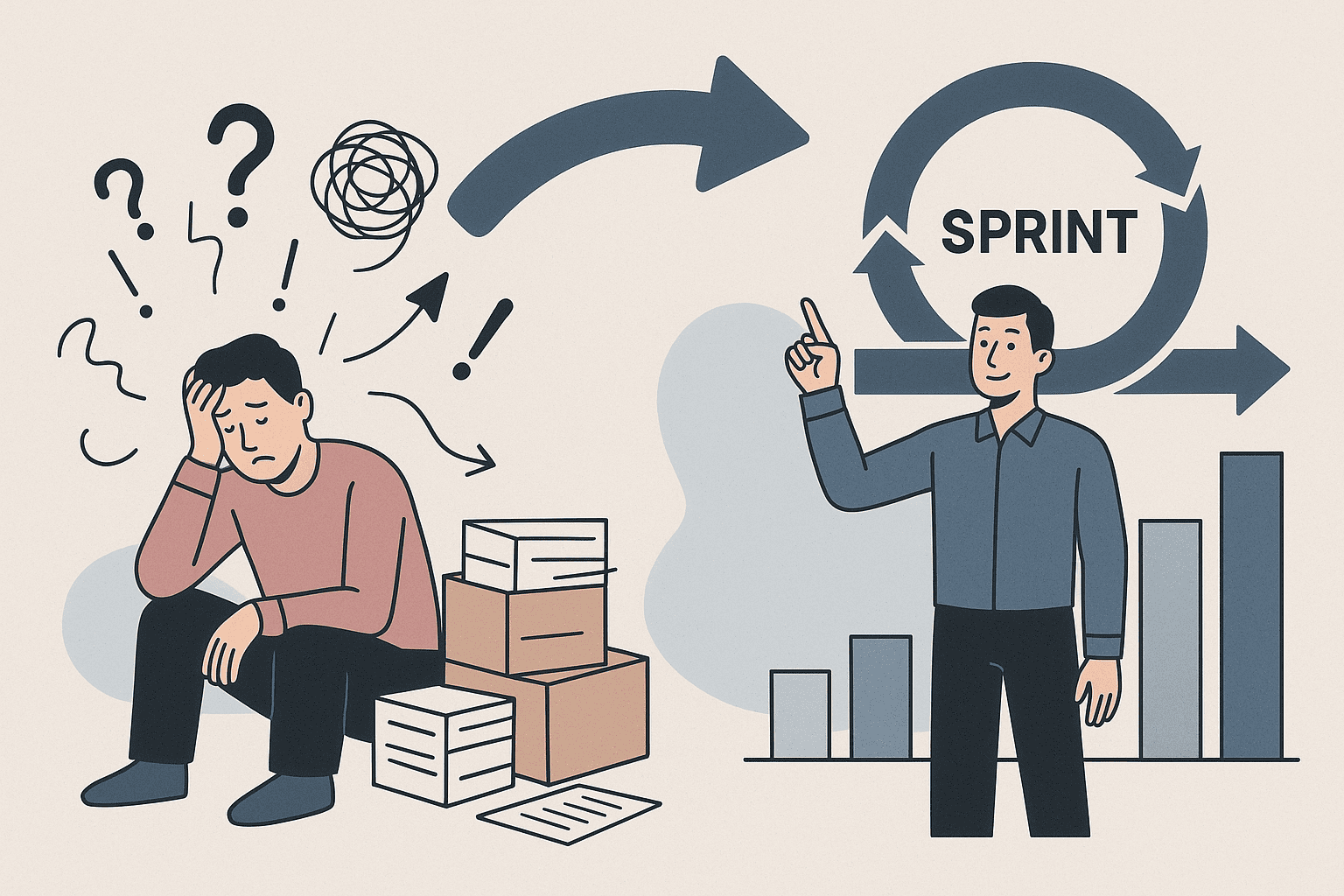Scrum, an Agile framework designed to help teams deliver high-quality products, has gained widespread popularity for its emphasis on collaboration, flexibility, and continuous improvement. However, transitioning to Scrum can present several challenges that teams must navigate to achieve successful adoption. Whether it’s resistance to change, lack of Scrum knowledge, or inadequate product backlog management, these obstacles can hinder the effectiveness and efficiency of Scrum practices. Let’s look into some of the obstacles faced while adopting scrum and practical solutions to overcome them..
- Resistance to Change:
Team members or stakeholders are resistant to changing existing processes.
Solutions:
- Conduct workshops and training sessions to explain the benefits of Scrum.
- Introduce Scrum practices gradually rather than all at once.
- Highlight case studies or success stories from other teams who have successfully adopted Scrum.
- Ensure strong support and advocacy from leadership to reinforce the change.
- Lack of Scrum Knowledge
Team members lack understanding of Scrum principles and practices.
Solutions:
- Encourage team members to attend Scrum training and obtain certifications.
- Have a knowledgeable Scrum Master who can guide and coach the team.
- Pair inexperienced team members with experienced ones for mentorship.
- Create a culture of continuous learning with regular knowledge-sharing sessions.
- Inadequate Product Backlog Management
The Product Backlog is poorly managed, leading to unclear priorities and requirements.
Solutions:
- Ensure the Product Owner understands their responsibilities in maintaining the backlog.
- Conduct regular backlog grooming sessions to keep it updated and prioritized.
- Involve stakeholders in backlog refinement to ensure alignment with business goals.
- Write clear and concise user stories with acceptance criteria.
- Ineffective Sprint Planning
Sprint Planning meetings are unproductive or fail to set realistic goals.
Solutions:
- Ensure that the Product Backlog is well-prepared before the Sprint Planning meeting.
- Encourage active participation from all team members during planning.
- Set achievable sprint goals based on the team’s velocity and capacity.
- Strictly timebox the Sprint Planning meeting to keep it focused and efficient.
- Poor Communication
Lack of effective communication among team members and stakeholders.
Solutions:
- Conduct daily standup meetings to ensure regular communication.
- Use collaboration tools (e.g., Slack, Microsoft Teams) to facilitate communication.
- Maintain transparency with progress reports and burndown charts.
- Use retrospectives to discuss and improve communication practices.
- Inconsistent Sprint Reviews and Retrospectives
Sprint Reviews and Retrospectives are skipped or not conducted effectively.
Solutions:
- Schedule Sprint Reviews and Retrospectives at the end of each sprint.
- Follow a structured format for these meetings to ensure they are productive.
- Focus on actionable feedback and improvements.
- Recognize and celebrate successes during Sprint Reviews to boost morale.
- Overcommitment and Unrealistic Expectations
The team commits to more work than they can realistically complete in a sprint.
Solutions:
- Use historical data to understand the team’s capacity and set realistic sprint goals.
- Track and use the team’s velocity to guide future sprint planning.
- Prioritize tasks and focus on delivering the most valuable features first.
- Be flexible and adjust the scope as needed during the sprint.
- Lack of Stakeholder Engagement
Stakeholders are not actively involved or interested in the Scrum process.
Solutions:
- Provide regular updates and demonstrate progress through Sprint Reviews.
- Involve stakeholders in backlog grooming and planning sessions.
- Clearly communicate the benefits of their engagement and how it impacts project success.
- Establish a feedback loop to ensure stakeholder needs and expectations are met.
- Difficulty Adapting to Iterative Development
The team struggles with the iterative nature of Scrum and frequent changes.
Solutions:
- Encourage a mindset shift towards embracing change and continuous improvement.
- Focus on delivering small, incremental improvements rather than big-bang releases.
- Train the team to be adaptable and responsive to change.
- Use retrospectives to reflect on and improve the team’s adaptability.
- Insufficient Tooling and Infrastructure
Obstacle:
- The team lacks the necessary tools and infrastructure to support Scrum practices.
Solutions:
- Invest in appropriate Scrum tools (e.g., JIRA, Trello) to support project management.
- Implement automation for repetitive tasks to improve efficiency.
- Establish CI/CD pipelines to facilitate frequent releases.
- Ensure adequate resources are allocated for necessary tooling and infrastructure.
Understanding and addressing these common obstacles is crucial for teams to harness the full potential of Scrum. By proactively identifying and mitigating these challenges, teams can create a more adaptive, cohesive, and productive working environment, ultimately leading to better project outcomes and increased stakeholder satisfaction.




